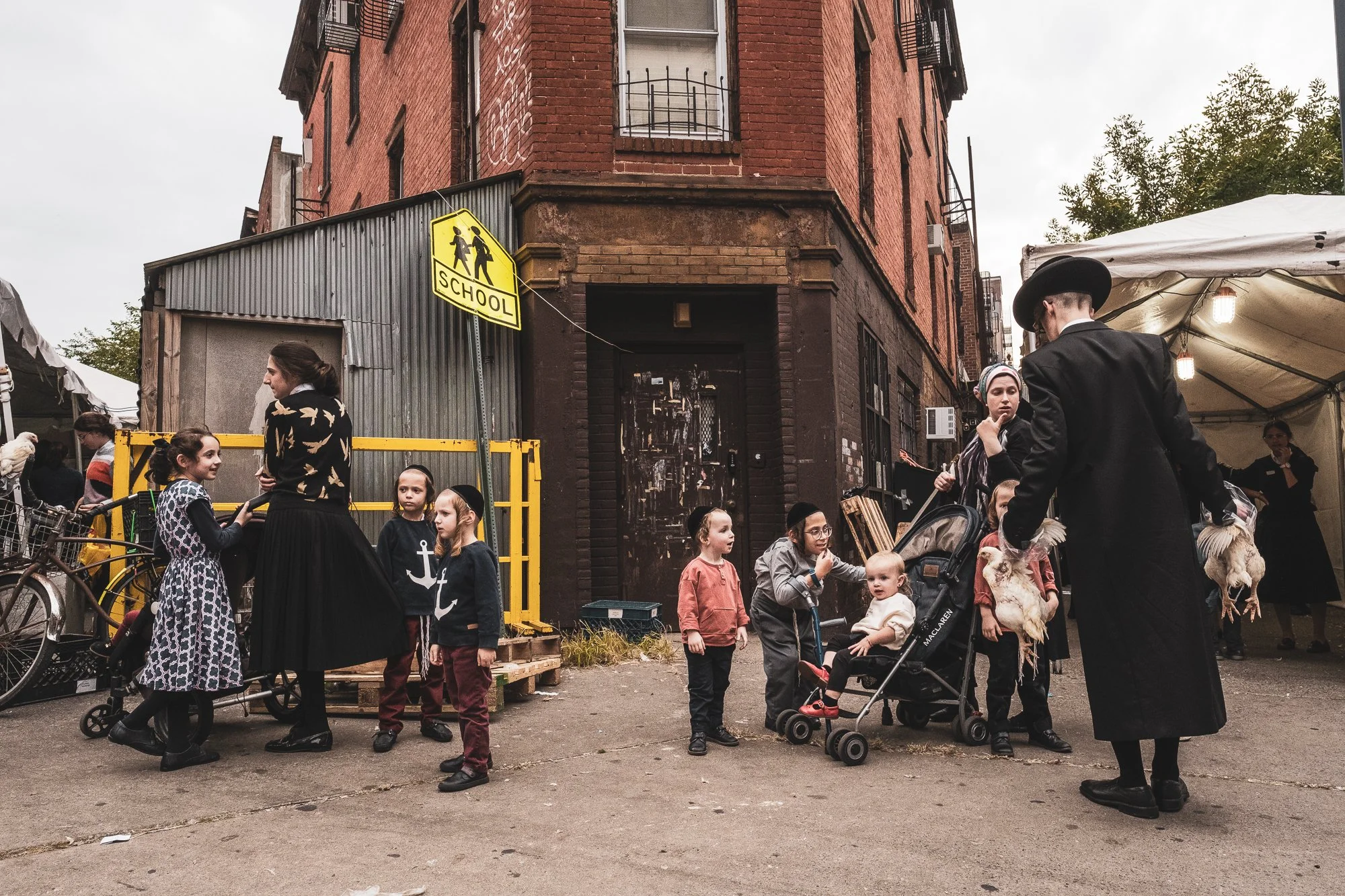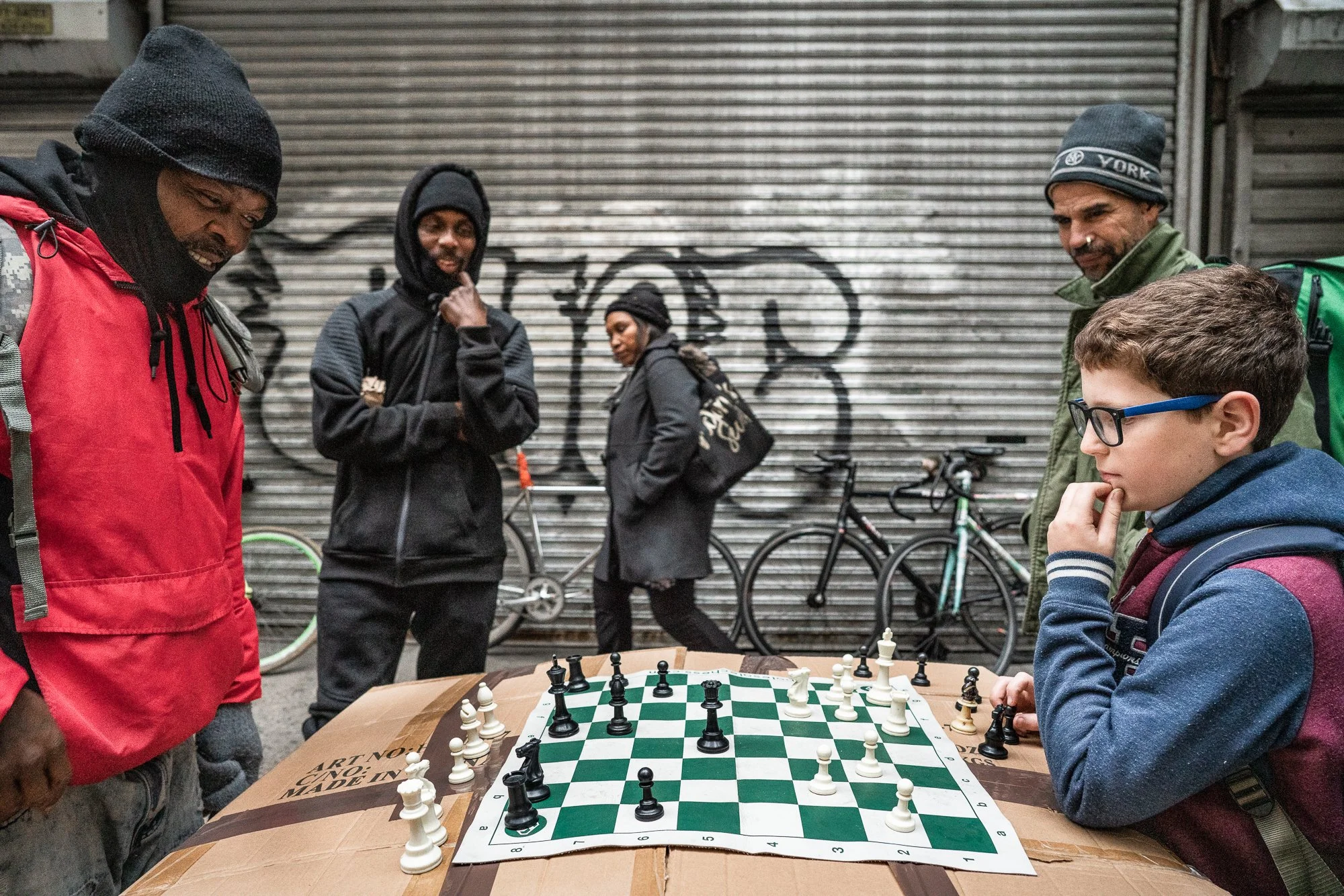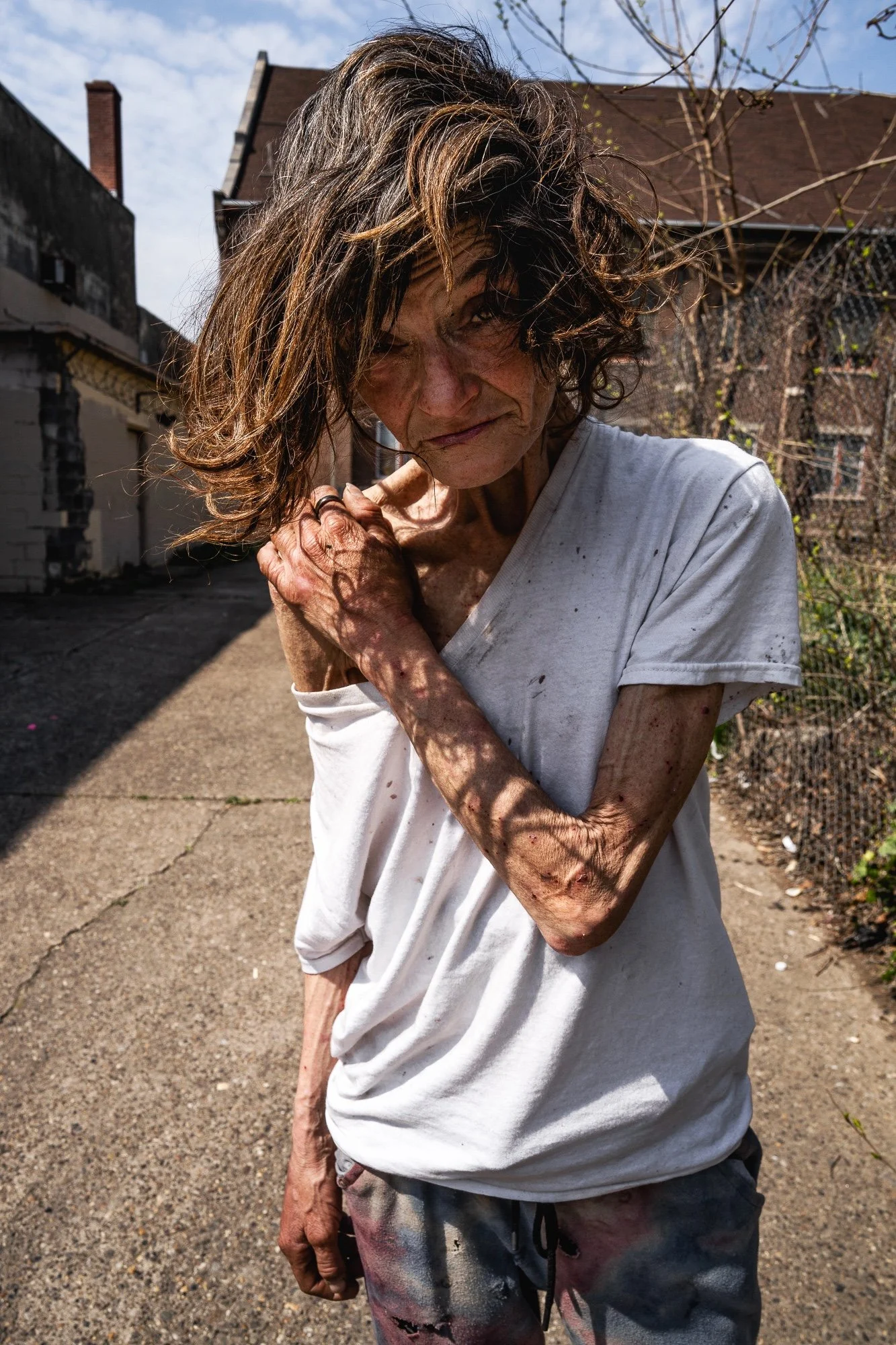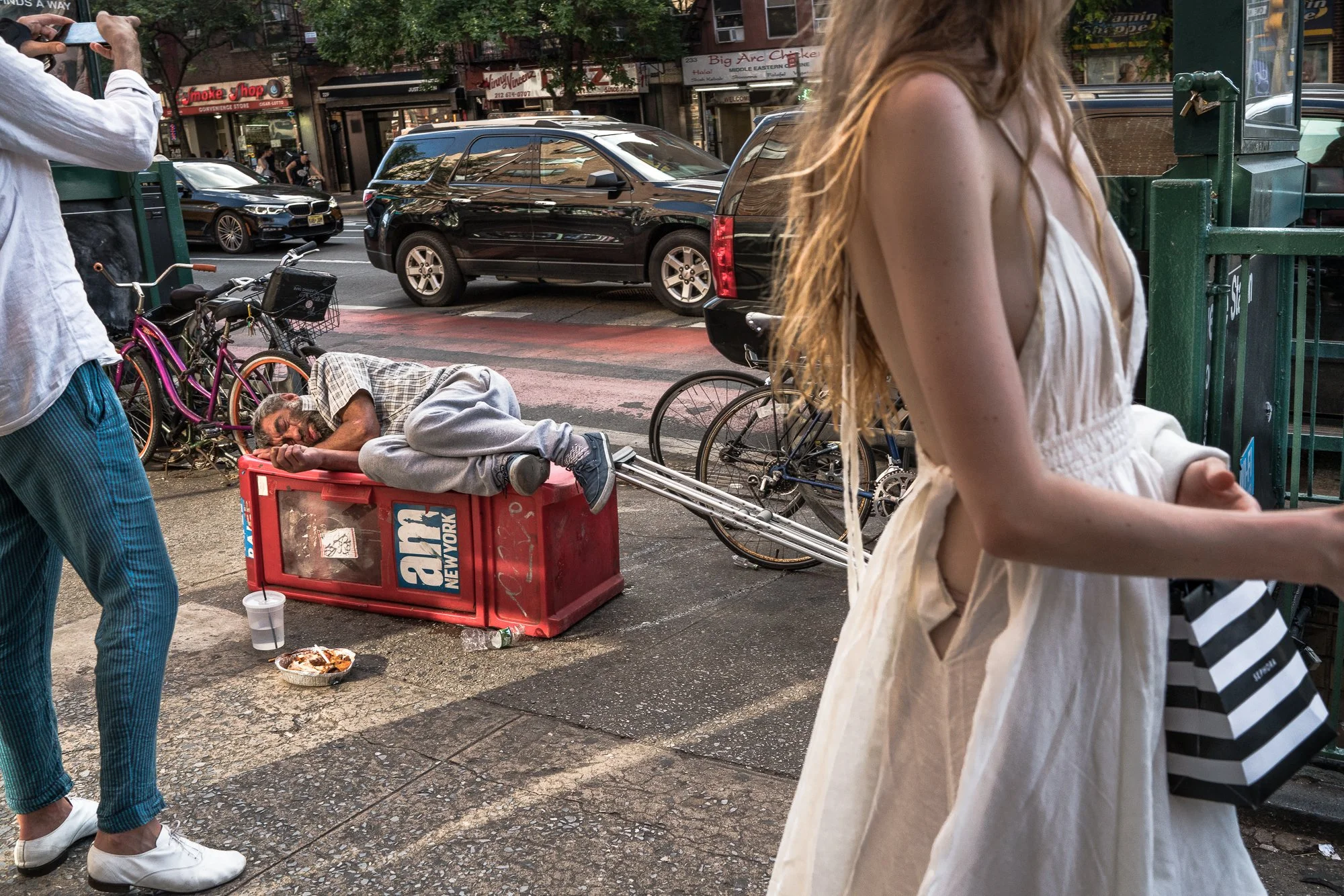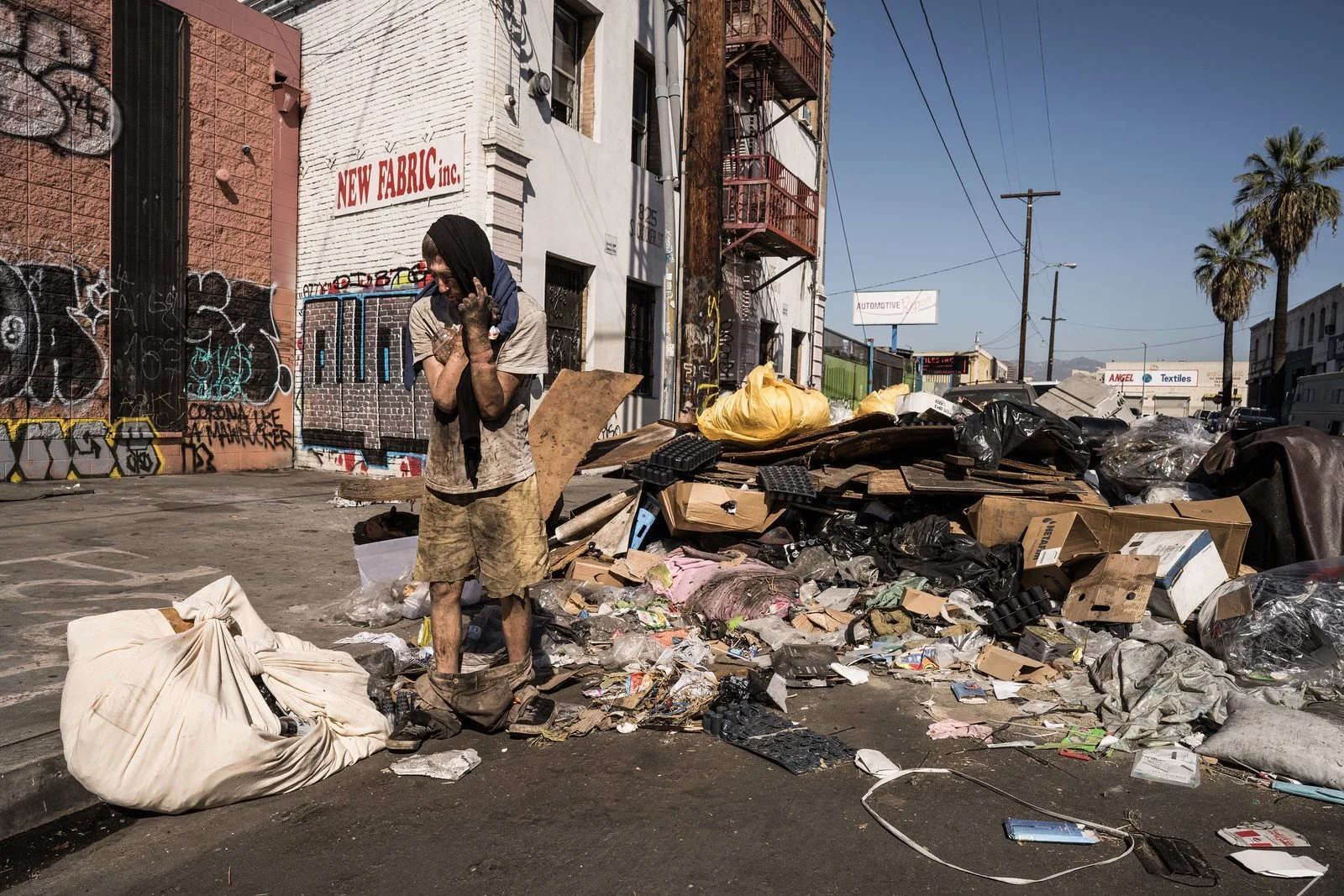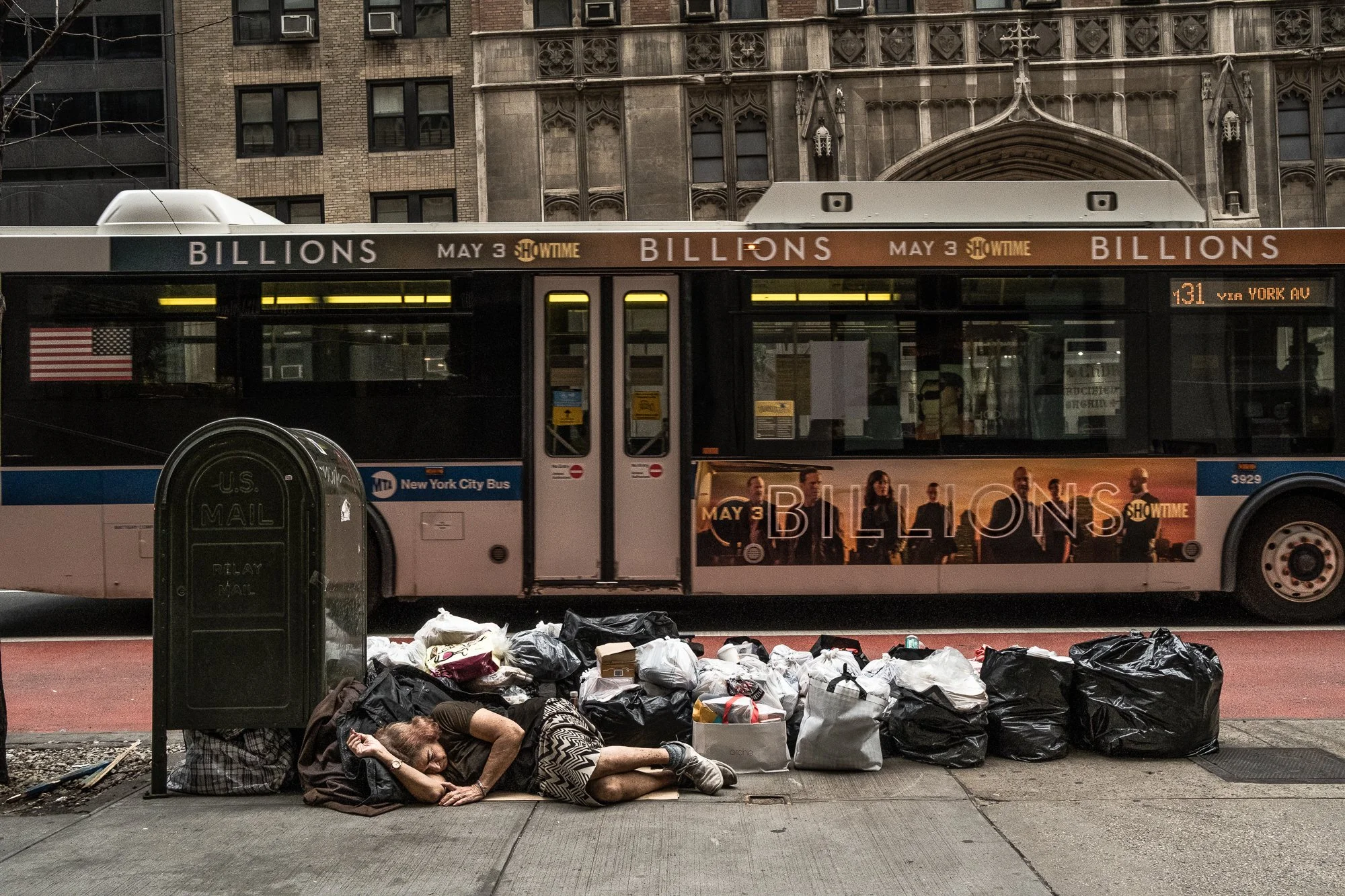Suzanne Stein
Suzanne Stein is a photographer living in Philadelphia and winner of the Founders Choice category of the 2023 BarTur Photojournalist of the Year award. Her work ranges from social documentary projects on drug addiction and mental health to street photography.
HM: I’d love to hear how you got started.
SS: I started with the iPhone and then realized it was totally inadequate, especially at the time, eight years ago. I didn't really know what I was doing. I was trying street photography. Then it was just like my whole life changed, like I turned a corner and the lights went on, I was blinded by the light. I got a camera and I learned to use it, and I just worked really, really hard. But it was tough because when I started I was just somebody's mom and nobody took me seriously. I think with photography, if you have an eye and a certain kind of artistic ability and personality type, you can come up to speed with a certain level of competence in street photography relatively quickly. So I was getting some really good shots and a lot of really bad ones.
New York City. Suzanne Stein
HM: What did you do before photography?
SS: I was an artist penciling graphite, and a lot of my subjects were similar to what they are now – disaffected people, interesting outcasts. I was always interested in a lot of lines and wrinkles.
HM: You are not choosing the easy way.
SS: No, I'm not. It's really a problem.
New York City. Suzanne Stein
HM: You're not hiding anything, you really want to see every bit of the human in front of you. What is the interaction that you have with your subjects?
SS: It starts with observation. I think I've developed a really good instinct for a story and for what's going to happen. I get this electric feeling I can't really describe that will attract me to a scene and I'll put myself there. If you follow your gut, it's almost like you can read the atmosphere, and something will happen or someone will show up and I'll get a great picture. But in the work I've been doing lately, you have to interact with people. To tell a story effectively, a lot of it is in your choice of subject. I can tell the same story, but it won’t be the same with a subject that's not as compelling, that doesn't have charisma.
HM: What do you get out of it? What are you trying to communicate?
SS: I'll get a feeling about someone, I'll see a situation and it'll just scream at me, and then I just kind of follow my instincts. People wonder what a sixth sense is, and a lot of times a sixth sense is really a highly developed ability to protect yourself in your environment. It's an evolutionary thing that's happening in your brain on a lot of different levels. It's not magic. It's the same with photography. There's a lot going on, and it's like a mathematical calculation of what's going to be a picture and what feels right.
Kensington and Allegheny Avenue. Suzanne Stein
I just came from Kensington (a poor area of Philadelphia). I always look a certain way when I go there. I wear certain clothes and look like I belong there, because you don't want to intimidate people. You don't want to look like a voyeur. You have to connect with them, and they'll ask you why you're there. Whether it's Kensington or it's a story about an older lady in the East Village In New York City, you have to let them connect with you, and they have to believe in you. That's where it starts with intimate portraits.
HM: Have you had any memorable interactions?
SS: Gosh, I've had so many. I had a guy, I am positive he wanted to shoot me in my car. I was in Kensington in a lonely spot and got a great picture. It was just a panoramic view, nobody in it. He came up to my car with a gun in his pocket that was pointed at me and leaned up against my car. I talked my way out of that.
I think my most memorable interactions would be on Skid Row, because I've had people set me up to get me trafficked. I've had a lot of other interactions with people who have nothing and who've given me gifts, given me jewelry. They have little, but because I sat with them and talked to them, it meant so much to them that they gave me something. I still have that stuff. I wear really odd things that people have given me. I've gotten a lot out of my interactions with people.
Margie, Clearfield and Emerald Street, Kensington, Philadelphia. Suzanne Stein
HM: Why did you choose this subject? Why are you going back again and again to the same place?
SS: I have a lot of pictures on my website that are not this type of subject matter. But people only remember this stuff because it's really strong. Substance use was a problem with my mother. My son had a problem. I think that it points to everything that our country neglects mentally – a lot of it's rooted in mental illness. If you don't have money, you can't get treated properly if you have basic mental illness in childhood. For every picture I take, that's a narrative. There's 3000 other ones that nobody ever saw. It's a real issue with American publications that don't publish this work.
I have a big piece in Stern that's online now. It's in five chapters, and they're going to put a big spread in the magazine. I have yet to meet anybody like that editor, Angelika, in the United States. I'm sure there's somebody, but it’s very hard to get work like this looked at in the US, and it's a travesty.
You never think that it's going to be your kid because you think you educated them and took care of them and love them. But once someone slides, they slide, and it’s hard to get out. The problem is, it's so available, and right now, one of the things that really pushed me into Kensington (a poor area in Philadelphia) is that in New York City now you can't walk down the street without getting hit with marijuana – really powerful marijuana, not the stuff I smoked in 1978. There are a lot of drugs being sold in the smoke shops, including fake knockoff chemicals. It's a problem in our country. We’re looking at pictures of dead people in Ukraine but we're not looking at what's happening here, and a lot of young people are dying because of it.
J, right, compares his newly emerging Tranq lesion with Brandon’s. Although small, the wounds can advance with great speed. Some people never get lesions that become problematic, while others are able to recover. Suzanne Stein
HM: So when you take these pictures, who are you showing it to, who are you marketing to, who's buying these pictures?
SS: I don't know how to do that. That's a weakness I have. I've had some conversations with a couple of editors, with a lady from Reuters who wants me to keep in touch and send her future work, someone at The Philadelphia Enquirer, an editor at The New York Times. They are really squeamish about this kind of work coming out of the US.
There's a lot of fear. There's a lot of elitism about what gets seen and how the picture should look. There's a kind of a polished picture aesthetic. I think that's not an indication of what life looks like and how people experience their lives – therefore it’s not accurate photojournalism. So no, I don't market it. I need to, but I don't know how.
HM: Do you think it's a kind of therapy for yourself, taking these kinds of pictures, because of the relationship you have with your mother and your son?
SS: I don't think of it that way, but it probably is. In the case of my mother – not everybody who gets trapped in addiction is some poor, hapless soul that got codeine prescribed for a back injury, or somebody who was slapped around as a kid and had this Oliver Twist life. Some people are narcissists. Some people like to get high, and they don't care if they have to rob and steal to get high. That’s a misconception that’s sometimes put out there about Kensington and other places. Not everybody is a victim. My mother was not a victim.
Alexandra, Kensington Avenue, Philadelphia. Alexandra’s arm was lost to a medically necessary amputation resulting from a devastating Tranq wound. Suzanne Stein
A lot of times, for me, I just see something that I think needs to be told, and it's a challenge. How am I going to get into a neighborhood controlled by drug dealers with guns and take pictures? But I see really important images that I think other people didn’t see. Probably it is partly therapy, but it's also partly a strong sense I have of things that aren't fair. I've had a lot of difficulties in my life, so when I see other people in similar circumstances, I can't walk away.
HM: Is there any photographer that you consider a role model, someone you admire?
SS: When I started I didn't really look to other photographers to learn, I just went and did it myself. I don't really look on Instagram. I see a lot of work, but I don't see a lot of work that I really love. I love Saul Leiter for artistic stuff, and I love Eugene Smith because of the Minamata work that he did, which I saw as a young child. Also black and white work from the Holocaust, from the old Polish villages. My dad had a lot of books. I saw a lot of pictures of Roman Vishniac. But as far as inspiration goes, I go to art museums because I like to look at paintings.
New York City. Suzanne Stein
HM: Which of your pictures are most meaningful to you?
SS: It's a really rough picture. I don't want to tear up. I was working on Skid Row for LA Magazine. I had an assignment at Echo Park, but I always go back to Skid Row because it's where my heart is. I had rented a car, which I never do. Right next to downtown LA, you have Skid Row and then you have the Flower District. I was driving through there and I saw this young man and he's the one of the dirtiest people I've ever seen. He's really young, maybe in his early 20s. He's tall, blonde, blue eyed, but he's absolutely filthy. Something just clicked, I pulled over, I grabbed my camera and I started following him. He led me into this labyrinth behind the Flower District, which is actually very dangerous in the daytime, but I have a way of anticipating the scene that I want. So I had to get ahead of him, and he walked right into the frame and he stood in this pile of garbage. It was then that I realized he had really deep ligature marks on his wrists. A ligature mark is when you've been tied up, it’s an indication of being restrained. It was clear to me that he'd been beaten and seriously abused. His pants were coming down. He was obviously a victim of trafficking.
Flower District/Skid Row, Los Angeles. A young man with deep ligature marks. Suzanne Stein
He was totally incoherent. He was probably battling whatever mom happened to him. He could be battling substance use disorder, mental illness, but he was like a child in a way and you know he is somebody's son. I think that picture is one of the most important pictures I've ever taken, because it screams about unseen victims. That's really what motivates me, because if you don't see it, there's no accountability.
I don't mean to sound like I'm on a soapbox, but I see it all the time. I see people who've been victimized so badly that I can't even write about it on my blog. I can't tell the story because I can't out that person or get them in trouble in their neighborhood.
HM: I think people look at your pictures and there is this question, because you are dealing with such difficult, ugly situations. Why does someone focus on it?
SS: It goes back to my experiences. My son has autism. He's very high functioning, he just got into college, but he has a lot of difficulty. I raised him by myself with very few resources in Del Mar, California, which is a wealthy small city in San Diego County, and the experiences I had just changed me utterly.
We struggled because I couldn’t get him therapy as a child. I met a lot of parents in the same situation. Then I began to realize it wasn't just “broke” people like me, it was also middle class people. So there's a serious problem in our country of not really having a medical social welfare system that allows people to get the help they need when they need it. I think it's all wrapped into that. That's why I do it.
New York City. Suzanne Stein
When I went out with the camera, I didn't see all the normal people. I’d walk down the street and not see the guys with t-shirts and Chino shorts, not see the normal families. It was almost like they were filtered out. I just saw these stories, and my eyes have been open to those stories because of my own experiences.
This goes back to picture editing – you have people who are in charge of what we see, and if their life experiences aren't a motivator, they’re not driven to tell certain stories. That is a problem for all of us. There are other photographers who just see pretty stuff. They can go to an ugly place and make pretty pictures with light and nice portraits because they want it to be pretty, they don't want it to be ugly, but the place they're in is a mess. I can take pretty pictures, but even my most creative pictures are all very realistic. I think I take hard pictures because I just get angry.
New York City. Suzanne Stein
But when I go to New York, I find myself taking these silly street pictures. I still love getting a great shot and I can still take a great regular old shadow and light picture. It's really terrific if you're in a place where you can marry that kind of shadow and light, a beautiful aesthetic with meaningful content, which I do have some of in Kensington. But that's not always possible, and I think the hard pictures are really calling out to me now like more than ever, as I get older.
Bethany, 6th Avenue and 14th Street, NYC. “Bethany wanted to prove to me that she was, despite her unusual appearance, invisible to most people. So she took off her blouse and stood, staring into the camera, for several minutes. And…..I saw that she was right. Nobody looked, and not just because it was an unusual sight. They just didn’t really notice.” Suzanne Stein
HM: Could you describe your relationship with your cameras? Do you have any feelings towards them or are they just tools?
SS: For a long time I always had my cameras in bed with me, literally, because I lived in a really small apartment in New York and I didn't have any room to store them. But I guess I could have bought something to put them in. Instead, I lined up my cameras on one side of my bed where I had room, and that's where they were. Now I sleep with them. I have this dog so I sleep with them right at the foot of my bed. I definitely have a relationship with my cameras. I get angry with them. They can pissed me off.
HM: Why do you get angry at them?
SS: Cameras have a lot of issues, so I get mad at them. I curse at them. But I love them too. I use a Sony A75 and a Leica and I do have very strong feelings about each camera, each lens. Each focal length is like a language. I have a Q3, the color one, and I have the Q2 monochrome. Those cameras speak a very distinct language. You can be very classy and articulate with them, but you can also get really funky and a little distorted. Sometimes when people use ultra-wide lenses, it has that outsider art feeling that Leica is able to get, just enough distortion to be artistic and funky without branding it as outsider art. That's what I like about that.

